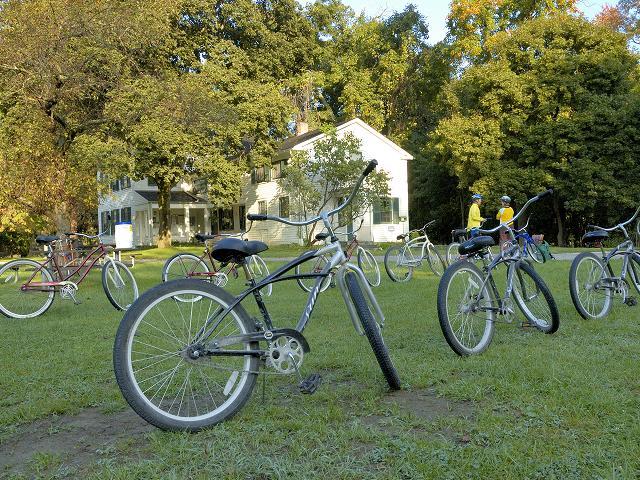Stanford House

The Cuyahoga Valley's early settlers from New England arrived to find their purchased properties hidden beneath a wilderness of dense forest. By the early 19th century, small hamlets and townships developed where farm families cooperated and exchanged goods. James Stanford, who moved his wife and children from Pennsylvania to Ohio around 1802, participated in surveying parties who gathered information about communities throughout Summit County. After surveying near Boston Township, James decided to move his family to a nearby 169-acre property on the western bank of the Cuyahoga River. James and his wife Polly continued to live on and work the farm for the rest of their lives. Later owners included James' son George, and grandson George C. Stanford.
Creating a new and successful farm required hard work, perseverance, and patience. Farmers often waited up to five years for their farm to become self-sustaining, and even longer for their land to become prosperous. By the 1880s, George C. Stanford cultivated about 100 acres of the farm, and focused his efforts on raising wheat, hay, cattle, and sheep. Like all farmers in the valley, the Stanford family also kept a garden where they grew a variety of fruits and vegetables.
The history of the Stanford family illustrates the importance of participation in local communities during the early years of valley townships. George Stanford and his son George C. Stanford served in a variety of offices in Boston Township. Both father and son were elected as justice of the peace during their lifetimes. George C. Stanford additionally served as township assessor and Boston postmaster. Each generation's active community involvement lent prominence to the Stanford family name.
Like many of the valley's properties, the Stanford farm and house witnessed many occupants throughout the centuries before becoming a part of the Cuyahoga Valley National Park. The Stanford House now serves as lodging for the national park's visitors, who can eat, sleep, and explore the valley's past within the walls of this historic house.
Audio
Images




